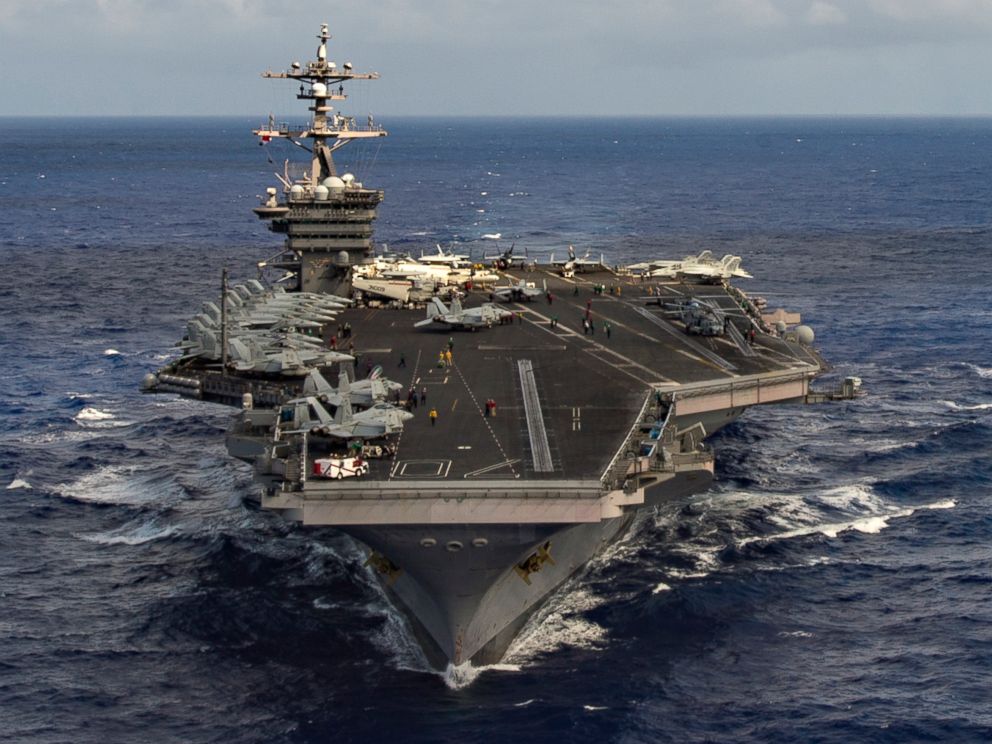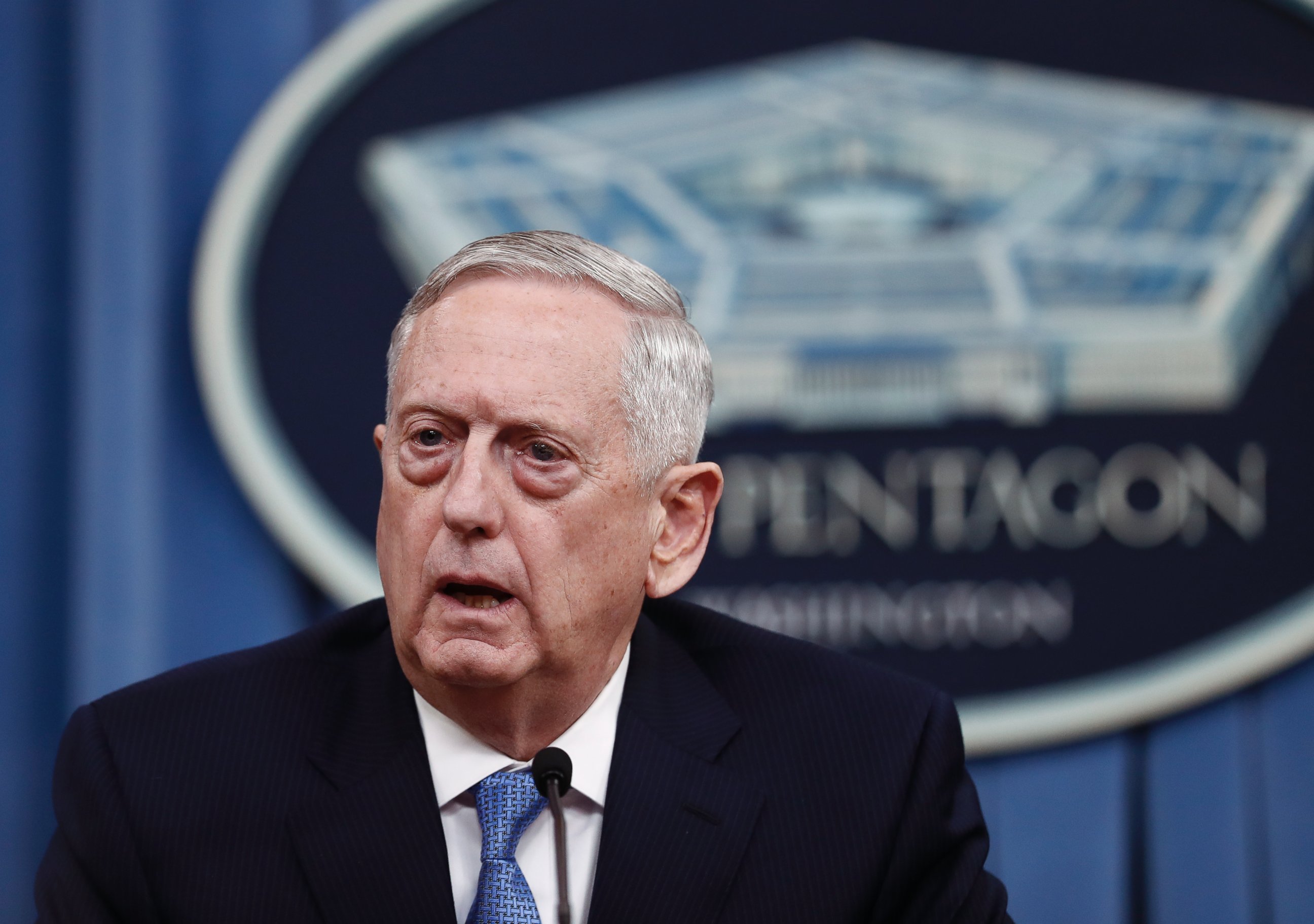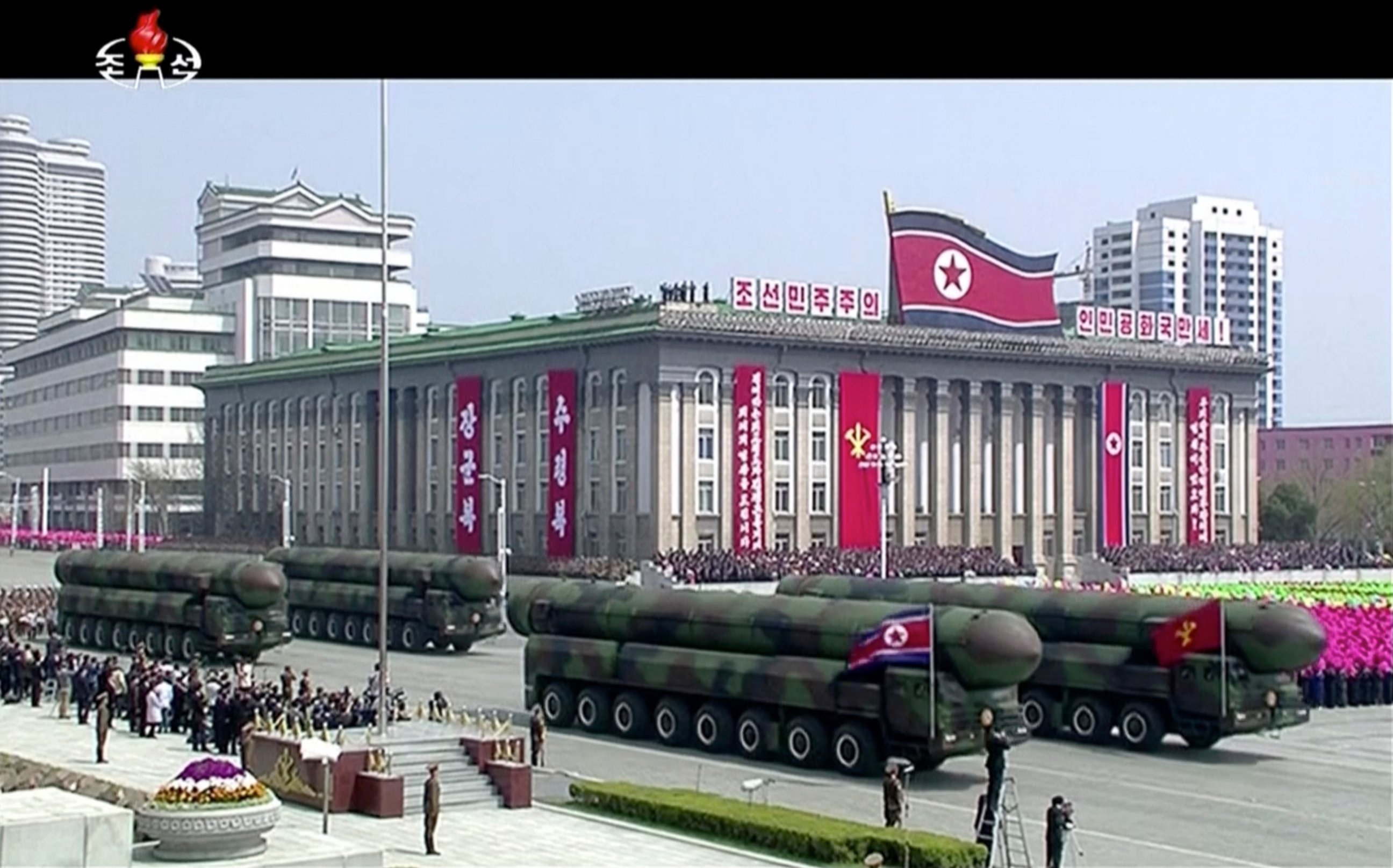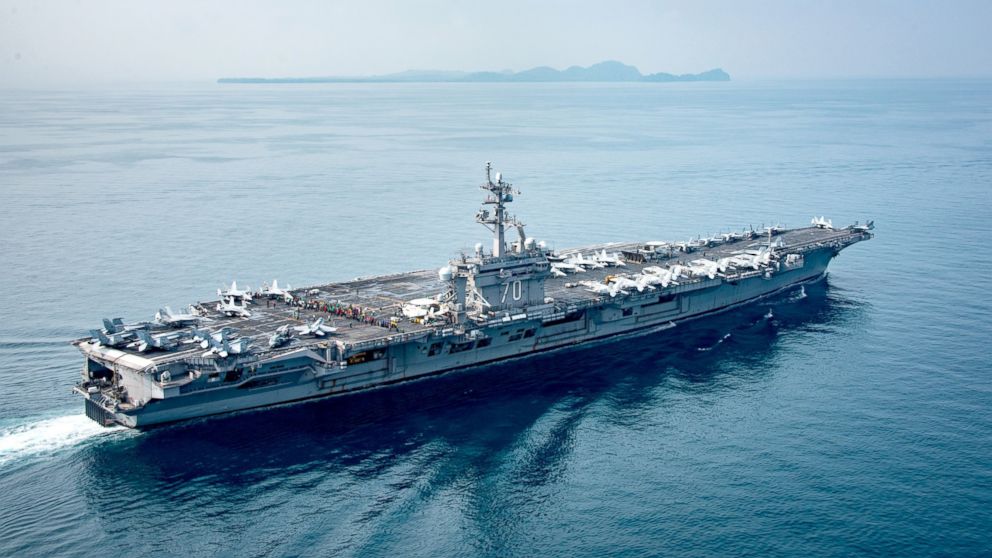Timeline of administration's statements shows confusion about location of US aircraft carrier
The White House is disputing accusations it misled on movement of USS Vinson.
— -- The White House today tried to clarify a series of confusing and possibly misleading statements about the location of a nuclear-capable aircraft carrier it initially said was headed north to the Korean Peninsula in the face of recent military provocations by North Korea.
The USS Carl Vinson was actually headed south from Singapore to participate in a four-day military exercise with the Australian Navy that only ended Tuesday. The carrier group is not expected in the Sea of Japan until the end of the month.
"Well, I mean I -- PACOM [U.S. Pacific Command] put out a release talking about the group ultimately ending up in the Korean peninsula. That's what it will do," White House spokesman Sean Spicer said at a press briefing this afternoon.
President Trump said in an interview last week that "we are sending an armada."
When asked whether the president may have spoken too quickly on the ship’s whereabouts before it actually headed north, Spicer replied, "The president said we'd have an armada going towards the peninsula. That's a fact. It happened. It is happening, rather."
But last week multiple senior administration officials indicated it was happening then, not now.
Spicer referred reporters to PACOM and the Department of Defense for details on the timing of the carrier group's arrival to the Korean Peninsula.
Here is a breakdown on how U.S. military and administration officials’ statements about the Vinson contributed to the confusion.
April 8
U.S. Pacific Command (PACOM) issued a statement on behalf of the Third Fleet that Admiral Harry Harris had "directed the Carl Vinson Strike Group to sail north and report on station in the Western Pacific Ocean after departing Singapore April 8."
The statement said that the Vinson would head north "rather than executing previously planned port visits to Australia."
It made no mention of the Sea of Japan or North Korea, though a U.S. official told ABC News that the intended redirection of the Vincent was to the Sea of Japan east of the Korean Peninsula.
The decision to change the course of the Vinson rested with Admiral Harris, who commands PACOM.
April 9
National Security Adviser H.R. McMaster was asked why the Vinson strike group was moving to the Korean Peninsula.
"Well, it's prudent to do it, isn't it?" McMaster told Fox News Sunday. "I mean, North Korea has been engaged in a pattern of provocative behavior. This is -- this is a rogue regime that is now a nuclear capable regime, and President Xi and President Trump agreed that that is unacceptable, that what must happen is the denuclearization of the Korean Peninsula. And so, the president has asked to be prepared to give him a full range of options to remove that threat the American people and to our allies and partners in the region."

April 11
Tensions continued to escalate between North Korea and the Trump administration. The president tweeted early in the morning that North Korea was "looking for trouble."
"If China decides to help, that would be great. If not, we will solve the problem without them!" the tweet read.
North Korea is looking for trouble. If China decides to help, that would be great. If not, we will solve the problem without them! U.S.A.
— Donald J. Trump (@realDonaldTrump) April 11, 2017
Later that day, White House press secretary Sean Spicer seemed to acknowledge the Vinson was headed to the Sea of Japan, saying, “The forward deployment is deterrence, presence. It’s prudent. But it does a lot of things. It ensures our -- we have the strategic capabilities, and it gives the President options in the region.”
Asked specifically about the Sea of Japan, Spicer said, “I think when you see a carrier group steaming into an area like that, the forward presence of that is clearly, through almost every instance, a huge deterrence. So I think it serves multiple capabilities.”
Then Defense Secretary James Mattis told reporters during a Pentagon news conference that the Vinson was “on her way up there because that's where we thought it was most prudent to have her at this time.” He added that the ship's role in an Australian exercise had been canceled.

It would later be revealed that the ship did participate in those exercises with the Australian Navy. The Pentagon issued a correction to the transcript one week later, on April 18, saying the ship's port visit to Fremantle, Australia, was canceled but the exercises proceeded as planned.
At the time, however, Mattis gave the impression that the Vinson strike group was on its way to the Korean Peninsula.
April 12
In an interview with Fox Business Network, President Trump says the United States is "sending an armada" after a question about North Korea.
“We are sending an armada, very powerful. We have submarines, very powerful, far more powerful than the aircraft carrier," he said.
Later that day, U.S. Pacific Command tweeted photos of the USS Carl Vinson "on patrol in the Western Pacific, ready for any contingency." It was heading south from Singapore through Indonesia for exercises with the Australian military that were set to begin on April 15.
USS Carl Vinson #CarrierStrikeGroup on patrol in the Western Pacific, ready for any contingency. #ThirdFleetForward @SurfaceWarriors pic.twitter.com/DyQcBqKWWQ
— U.S. Pacific Command (@PacificCommand) April 12, 2017
April 14
North Korea holds a big military parade in Pyongyang to mark the 105th birthday of the country's founder, Kim Il Sung. The parade featured intercontinental ballistic missiles and previously unseen canisters that could hold a long-range missile.

April 15
The Vinson transited south through the Sunda Strait in Indonesia, thousands of nautical miles from the Sea of Japan. The U.S. Navy released a photo of the transit two days later.
The Vinson participated in exercises with the Australian Navy off the coast of northwestern Australia. It has not yet left for the Sea of Japan.

Early Saturday evening Eastern Standard Time, North Korea conducted a failed ballistic missile test. The missile exploded immediately after liftoff.
April 17
Vice President Mike Pence, who landed in Seoul on Sunday, told CNN that "North Korea would do well not to test his resolve or the strength of the armed forces of the United States in this region."
Pence cited the "Mother of all Bombs" dropped in Afghanistan days prior, even though that bomb was not intended by the White House to send a message to North Korea.
The decision to drop the bomb on ISIS fighters was made by commanders in Afghanistan.
April 18
U.S. Pacific Command (PACOM) announced that the Vinson was heading to the Western Pacific, as ordered.
“The USS Carl Vinson Strike Group is proceeding to the Western Pacific as ordered," the news release said. "After departing Singapore on April 8 and cancelling a scheduled port visit to Perth, the Strike Group was able to complete a curtailed period of previously scheduled training with Australia in international waters off the northwest coast of Australia. The Carl Vinson Strike Group is heading north to the Western Pacific as a prudent measure.”
The location of the "Western Pacific" did little to clear up the Vinson's location because PACOM had tweeted six days earlier that the Vinson was "on patrol in the Western Pacific."
April 19
Vice President Pence was asked about whether the military and administration's comments regarding the Vinson's location were deliberately misleading.
"Oh, I think not," he said. "We have an extraordinary commitment of U.S. Forces in the region. The 'Carl Vinson' and that battle group are be deployed to the Sea of Japan and will likely arrive here in the coming weeks."
Defense Secretary Mattis was also asked to clear up the confusion about the Vinson's redirection. Mattis, talking to reporters from Saudi Arabia, said the ship is "doing exactly what we said."
"The bottom line is in our effort to always be open about what we’re doing, we said that we were going to change the Vinson’s upcoming schedule," Mattis said. "The Vinson, as I’ve said on the record, was operating up and down the Western Pacific. And were doing exactly what we said. And that is we are shifting her, instead of continuing her in one direction, as she pulled out of Singapore she’s is going to continue part of her cruise down in that region. But she was on her way up to Korea.
"We don’t generally give out ship schedules in advance but I didn’t want to play a game either and say we’re not changing a schedule when in fact we had," Mattis continued.
The Carl Vinson's own Facebook page posted today that the seven-month deployment of the ship had been extended by 30 days for "persistent presence in the waters off the Korean Peninsula."
Spicer's comments at the press briefing today showed the White House is standing by its explanation of the Vinson's movements.




